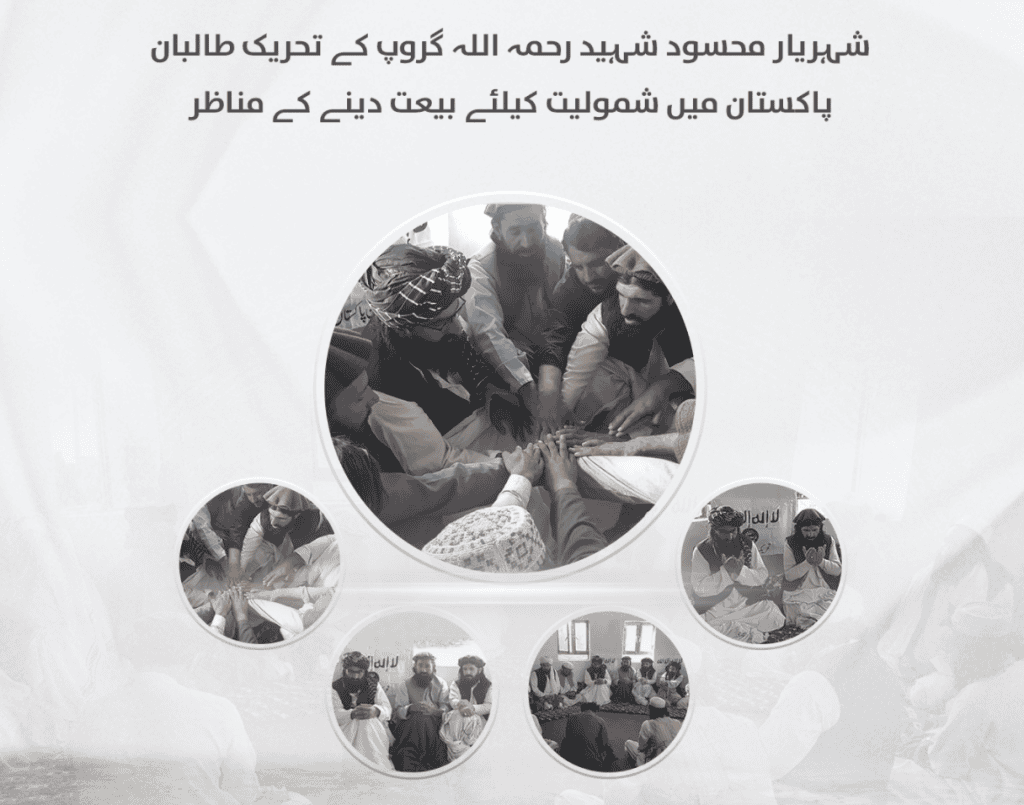
The Movement of the Taliban in Pakistan (TTP) is consolidating its power in Pakistan’s volatile tribal areas.
With increased muscle, backing and resources, the TTP – which sent thousands of fighters into Afghanistan to help the Afghan Taliban conquer the country over the summer – can now refocus its efforts on relaunching its insurgency in order to overthrow the Pakistani state.
The Shehryar Mehsud Group rejoined the the TTP this month and its leaders pledged allegiance to Mufti Noor Wali Mehsud, according to two statements released on the group’s website.
In total, nine Taliban and Al Qaeda-linked groups have sworn allegiance to Wali and taken up the banner of the TTP since July 2020 (see groups listed below). Many of these groups have close ties to Al Qaeda and the constellation of Pakistani jihadist groups. These groups likely will aid Wali and his TTP in relaunching its insurgency against the Pakistani state.
The Shehryar Mehsud Group was one of several Pakistani Taliban factions that split from the TTP after the TTP named Mullah Fazlullah its emir in Nov. 2013. Fazlullah replaced Hakeemullah Mehsud, the popular TTP leader from South Waziristan who waged a successful and deadly insurgency against the Pakistani state during his tenure as the second emir of the TTP. As emir of the TTP from 2009 until his death in late 2013, Hakeemullah engineered the deaths of thousands of Pakistani civilians, soldiers, and policemen. Taliban fighters under his command launched suicide attacks and assaults in mosques, shrines, hospitals, markets, hotels, police stations and military bases.
Fazlullah’s appointment led to divisions within the TTP. The terror group, which was founded in Dec. 2017 by Baitullah Mehsud in South Waziristan, was traditionally led by Mehsud tribesmen. Fazlullah, who hailed from Swat in Khyber Pakhtunkhwa province, was an outsider of the traditional TTP leadership circles, and his leadership style was unpopular. Coupled with Pakistan’s offensive against the TTP, the group splintered. [See LWJ reports, Discord dissolves Pakistani Taliban coalition and Mehsud faction rejoins the Movement of the Taliban in Pakistan.]
Fazlullah was killed in U.S. drone strike in Afghanistan in 2018. He was replaced by Mufti Wali Noor Mehsud. Also known as Abu Mansoor Asim, Wali is a veteran jihadist who fought alongside the Afghan Taliban against the Northern Alliance and against the U.S. and its allies after the Oct. 2001 invasion. Wali has served as a military commander and has led the TTP in the Pakistani city of Karachi. More importantly, Wali is a religious scholar who rose to the rank of judge within the TTP. His credentials gave him the needed clout to reorganize the TTP.
While opposed to the Pakistani military, the TTP has some cards up its sleeve in its efforts to overthrow the country and impose an Taliban regime. Its main allies, the Afghan Taliban and Al Qaeda, were victorious in Afghanistan and the country is now a terror safe haven. The Taliban played a key role in helping conquer Afghanistan, and it will expect support, even if covert, from the Afghan Taliban. Wali, the TTP emir, swore allegiance to the Taliban’s emir in Aug. 2019, just days after the Taliban took over Afghanistan.
The Pakistani military, its Inter-Service Intelligence Directorate and powerful elements of the state handcuff themselves by continuing to play both sides of the jihadist coin. The Pakistani state also played a key role in supporting the Afghan Taliban by providing safe have, support, weapons, cash, and other forms of support. The Afghan Taliban and other groups such as Lashkar-e-Taiba are considered “good Taliban” by the state, as they help promote the foreign policy goals of Pakistan – primarily strategic depth against India and jihad in the Indian territory of Kashmir and Jammu.
However, the so-called “good Taliban” are allied with groups like the TTP and Al Qaeda, the so-called “bad Taliban” which actively seek to overthrow the Pakistani state. The good Taliban provide shelter, support, manpower, and such to the bad Taliban, which attacks the state. This is the “Wheel of Jihad.”
Taliban and Al Qaeda-linked groups that have joined the TTP since July 2020
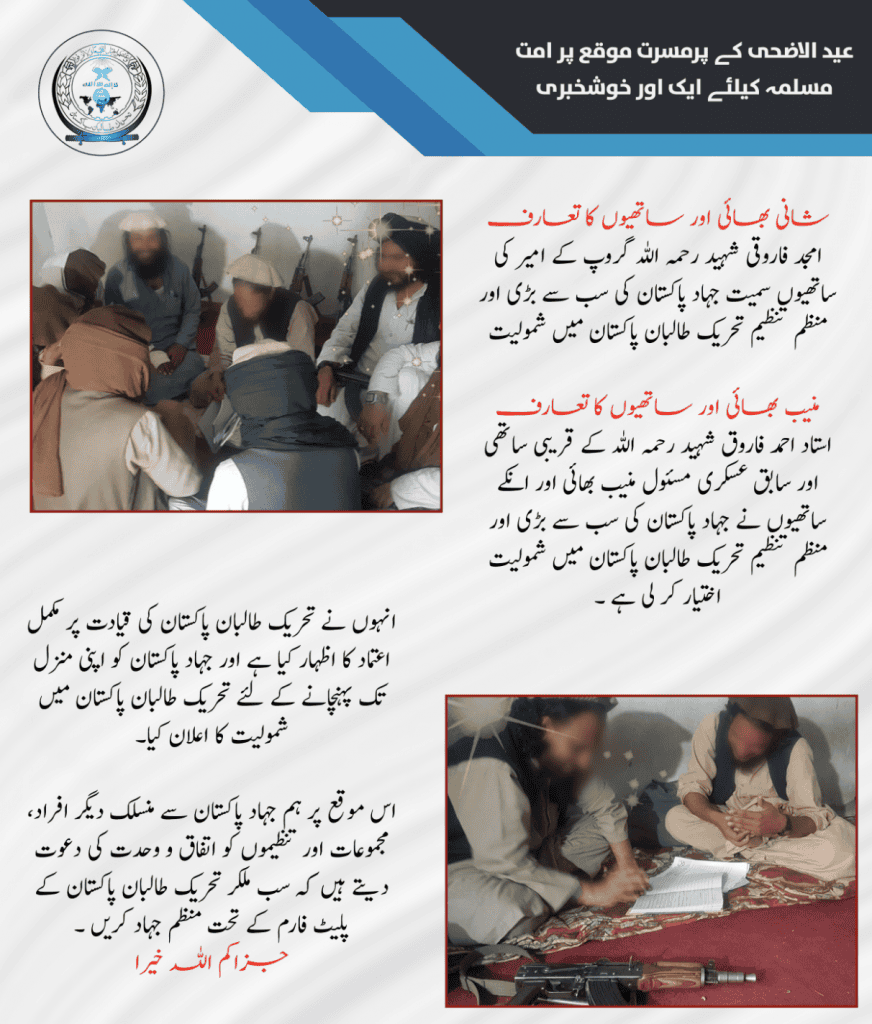
The Amjad Farooqi Group, led by Muneeb Bhai, joined the TTP in July 2020. According to the TTP, Bhai was “a close associate of Ustad Ahmad Farooq.” Farooq was a deputy emir of Al Qaeda in the Indian Subcontinent, Al Qaeda’s branch in south and central Asia. The U.S. killed Farooq in a drone strike in early 2015.
Amjad Farooqi was a Pakistani jihadst and member of Jaish-e-Mohammad. He was involved in the assassination attempt on former Pakistani president Pervez Musharraf. Farooqi served as a close aide to Qari Saifullah Akhtar, the leader of the Harakat-ul-Jihad-al-Islami. He also served as the group’s representative to al Qaeda’s International Islamic Front. He is thought to have been involved in the Indian airliner hijacking that led to the release of both Maulana Masood Azhar, the future leader of the Jaish-e-Mohammed, and Sheikh Omar Saeed, a senior al Qaeda and Jaish-e-Mohammed operative involved in the death of U.S. journalist Daniel Pearl. Farooqi was killed by Pakistani forces in 2004. Al Qaeda lionized Farooq after he was killed.
—-
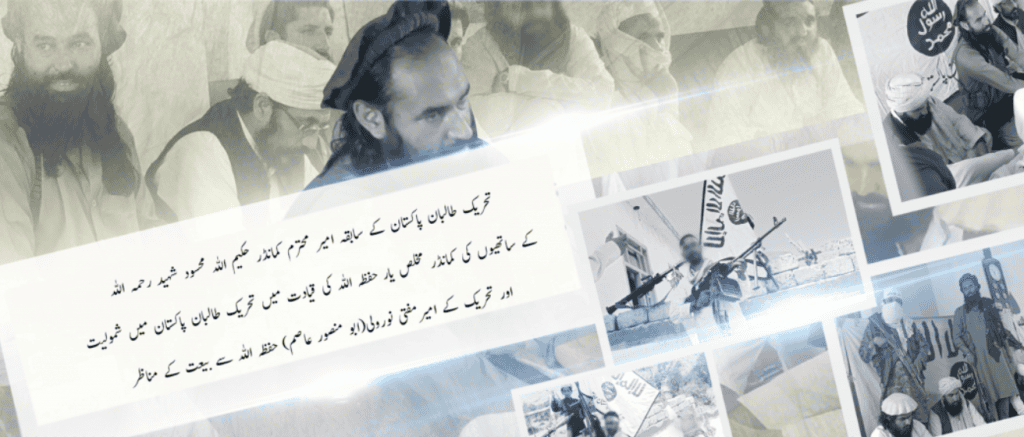
In July 2020, Mukhlis Yar Hifazullah, who led a Taliban faction that was loyal to Hakeemullah Mehsud, swore allegiance to Wali and rejoined the TTP. While little is known of Mukhlis Yar Hifazullah, his previous patron Hakeemullah was integrally linked to Al Qaeda, the Afghan Taliban, and the host of Pakistani and South and Central Asian jihadist groups operating in the region.
—-
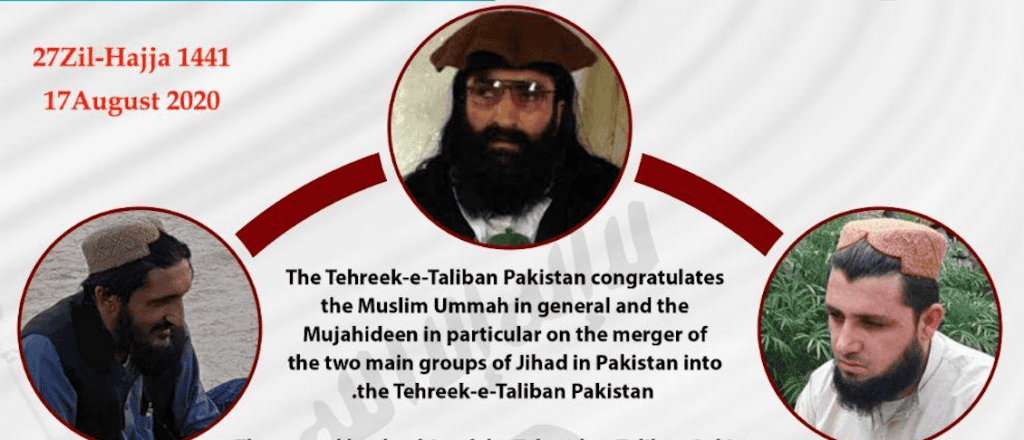
Jamaat-ul-Ahrar (JuA) and Hizb-ul-Ahrar (HuA) rejoined the TTP in Aug. 2020. However, both groups, along with Lashkar-e-Islam, had previously reconciled with the TTP in 2015. It is possible that JuA emir Omar Khalid Khorasani and HuA emir Omar Khorasani renewed their allegiance to the TTP and swore their oath to Wali.
JuA was listed by the U.S. government as a terrorist organization in 2016. Omar Khalid al Khurasani is closely linked to Ayman al Zawahiri, al Qaeda’s emir, and has called for the imposition of sharia law and the establishment of a global caliphate. Khurasani has also said that a primary goal of the Pakistani Taliban is to obtain nuclear weapons. [See LWJ reports, Taliban commander wants Pakistan’s nukes, global Islamic caliphate, and Jamaat-ul-Ahrar celebrates 9/11 attack.]
—-
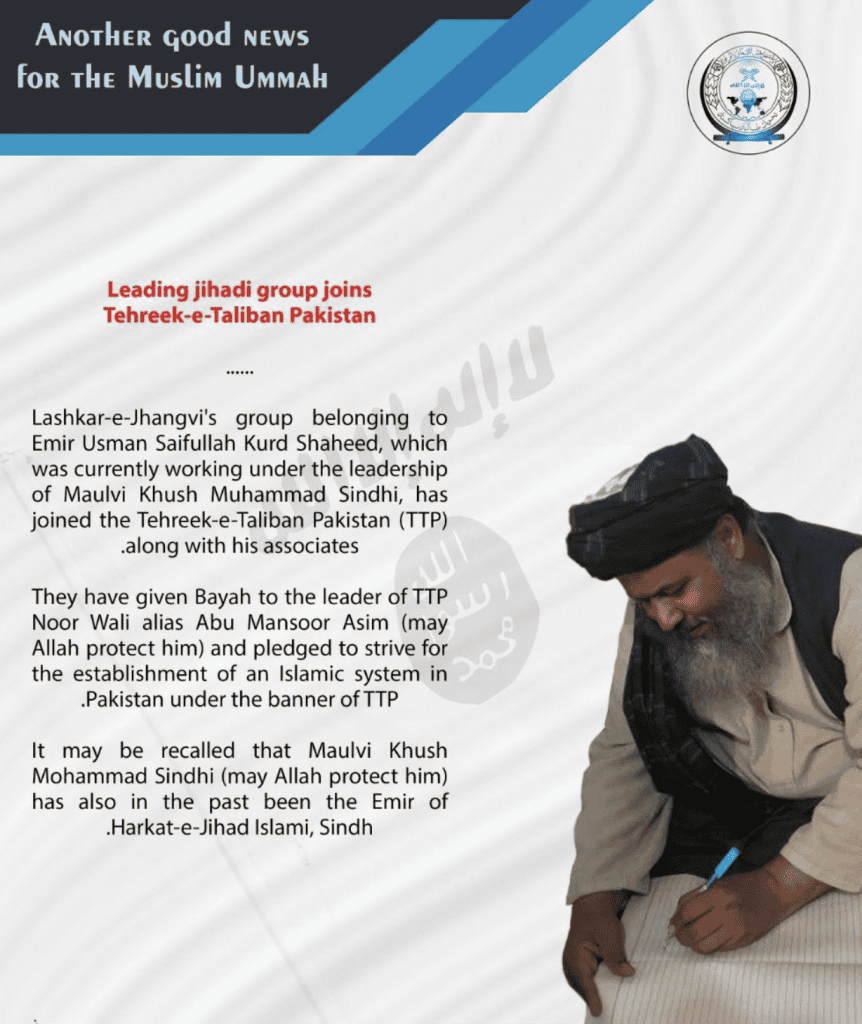
In Aug. 2020, Maulvi Khush Muhammad Sindhi swore allegiance to Wali, and his Amir Usman Saifullah Kurd Group joined the TTP. The Amir Usman Saifullah Kurd Group was part of Lashkar-e-Jhanghvi, the virulent anti-Shia terror group with ties to Al Qaeda and a host of terror organizations. Sindhi previously served as the emir of Harakat-ul-Jihad-al-Islami, (HUJI), another Al Qaeda ally in Pakistan. Previous leaders of HUJI include Ilyas Kashmiri, who served as Al Qaeda’s military commander, and Qari Saifullah Akhar, who was directly linked to Osama bin Laden and Pakistan’s Inter-Services Intelligence Directorate. The U.S. killed Kashmiri in Pakistan in 2011, and the Afghan NDS killed Akhar in Afghanistan in 2017.
—-
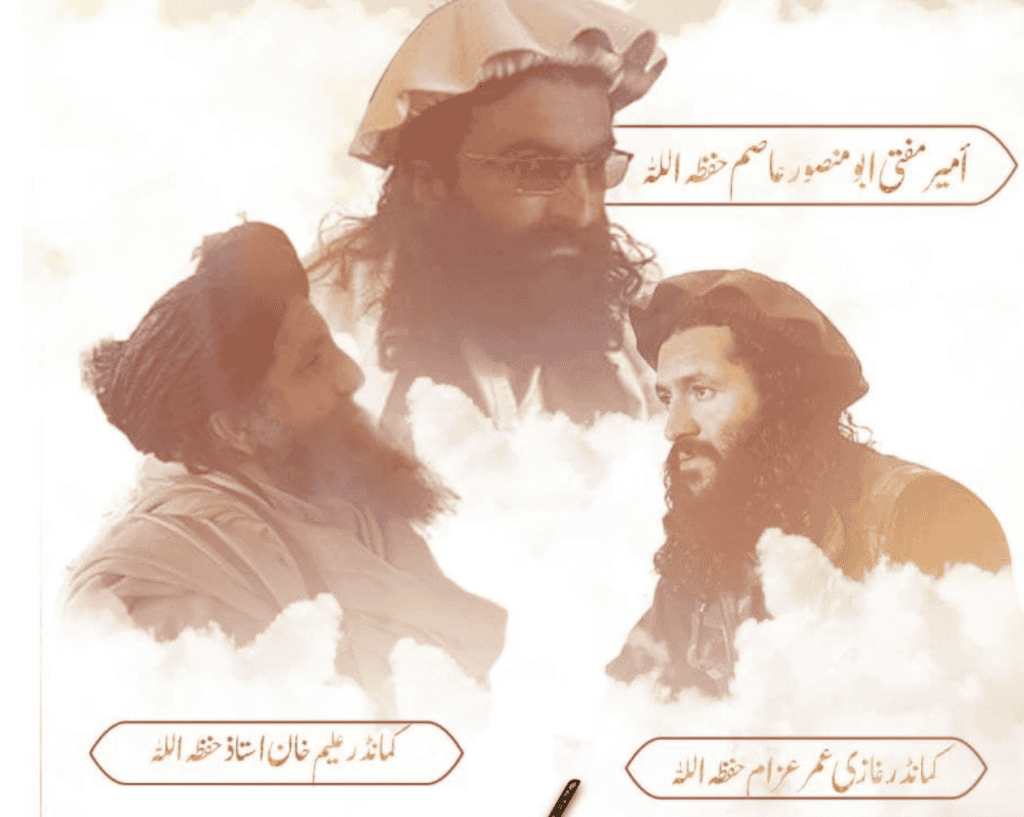
In Dec. 2020, Maulavi Aalim Khan Ustad and Commander Ghazi Umar Azaam swore bayat to Wali, and their groups joined the TTP. Aalim Khan Ustad previously served as a commander under Hafiz Gul Bahadar, an influential Taliban commander in North Waziristan who is not aligned with the TTP. Bahadar is the consummate “good Taliban” leader. While he has not joined the TTP, he supports it while maintaining good relations with the Pakistani state. Khan had previously negotiated with the Pakistani government and formed a group called Jaish-e Muttaqi. Ghazi Umar Azaam, also from North Waziristan, is the leader of a group known as Musa Shaheed Karvan.
—-
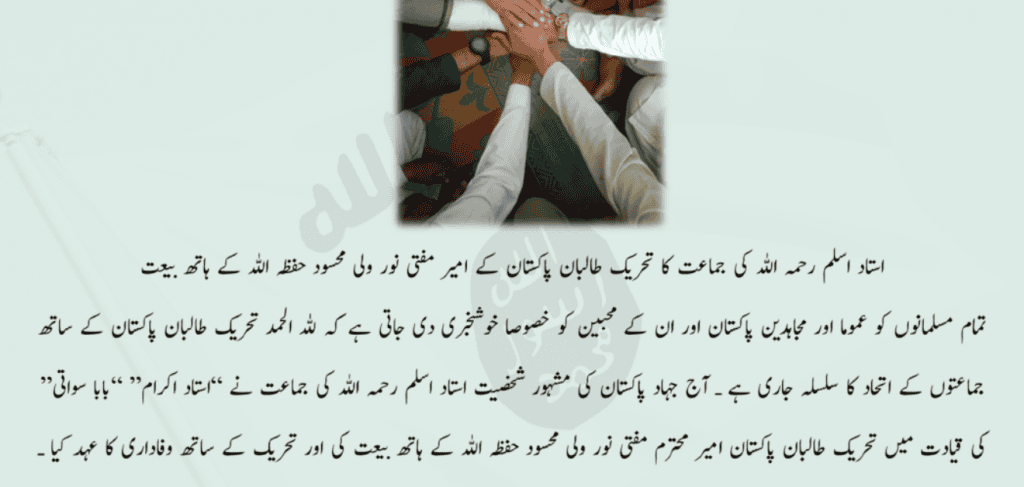
In Aug. 2021, a group of Taliban fighters led by Ustad Aslam joined the TTP. Aslam, who is also known as Qari Yasin, is an Al Qaeda commander from Punjab who operates in North Waziristan. Aslam was “involved in several high-profile terrorist attacks, including the assassination attempt on former president Gen. Pervez Musharraf, the attack on the GHQ, the attack on the Sri Lankan cricket team and a bomb blast at Data Darbar in Lahore.” He was rumored to have been killed in a U.S. drone strike in 2017, but the reports were never confirmed.
—-
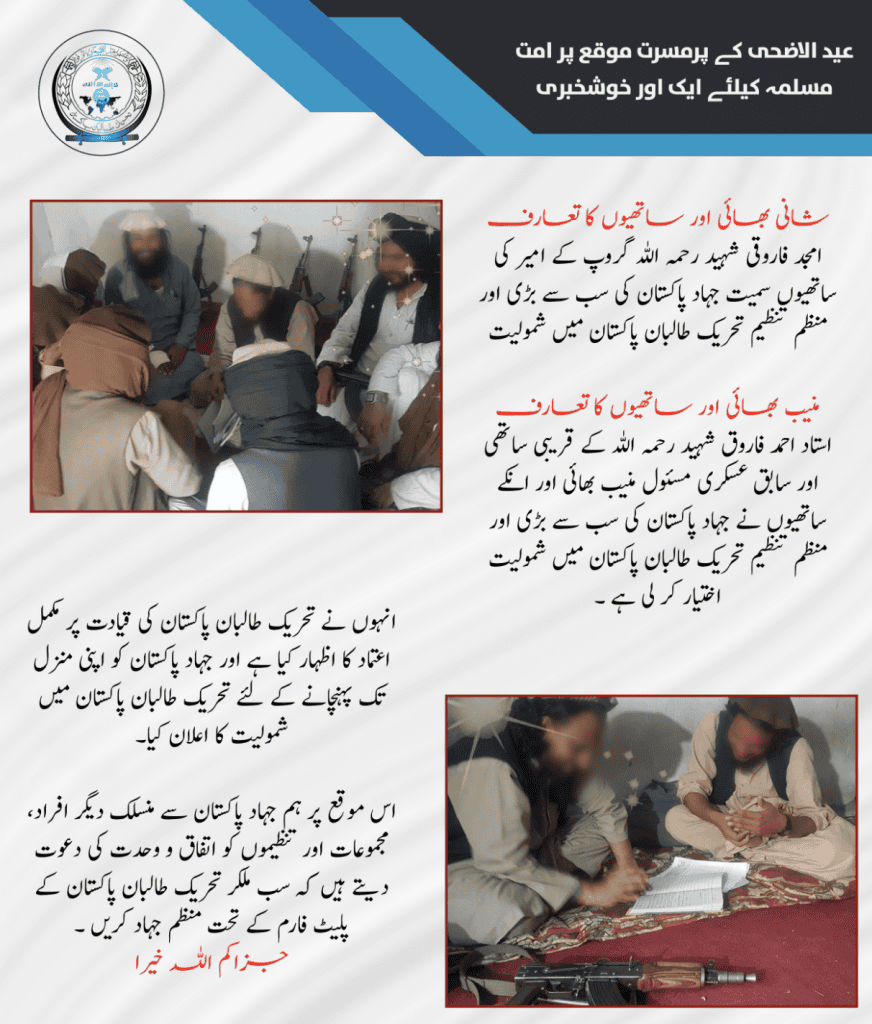
In Oct. 2021, the Shehryar Mehsud Group, along with leaders Maulana Sher Alam, Commander Asad and Dr. Hamid Akhir, joined the TTP. The Shehryar Mehsud Group had split with the TTP after Mullah Fazlullah was appointed emir. The group was founded by Shehryar Mehsud, who was killed in a bombing in Afghanistan in Kunar province in 2020. Shehryar is said to have made many enemies amongst Pakistan’s various jihadist groups. The Shehryar Mehsud Group is now led by Maulana Wali Muhammad.







